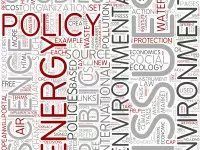
Environmental Remediation is the removal of contaminants and pollutants from the environment. An Environmental Remediator finds and removes various pollutants from soil and water. The goal is to redevelop these polluted sites or restore them to their natural states. The majority of the time, the pollutants are left behind by industrial companies that have gone out of business or moved before environmental laws were enacted. Some companies simply disregard current environmental regulations.
Cleanup jobs can range from something as small as a light pollutant spill, to a large-scale environmental disaster. Projects on a larger scale are likely to be overseen by the Federal Government, specifically the Environmental Protection Agency (EPA).
This career path is incredibly important to keeping both the environment and people healthy. Certain pollutants could seep into surrounding water supplies and poison those who drink from it. Environmental Remediators prevent these tragedies from occurring.
Some positions in Environmental Remediation include, but are not limited to: Compliance Officers, Conservation Scientists, Environmental Engineers, and Hazardous Materials Removal Workers. See the specifics of each career path below.
Environmental Remediation Jobs & Job Description
Environmental Remediator work as individuals or teams in order to remove pollution and contaminants from soil and water in our environment and natural areas. A careful balance of planning and quick action, remediation teams utilize a number of strategies in order to undue damage that was done. While every job varies, environmental remediation teams have a number of skills and roles in common:
- Read current literature and research surrounding issues and techniques in remediation
- Be a strong advocate of the natural environment and how humans may impact it
- Be knowledgeable regarding an array of regulatory requirements
- Assess human health after a damaging event
- Assess ecology in a holistic way after a damaging event
- Create ad hoc standards where no regulations currently exist
- Act with best practice when standards and regulations are advisory
- Assess the damage from contamination
- Efficiently research the use of the site and materials used
- Conduct field work for sampling and chemical analysis
- Consider adjacent sites' contamination and how that may affect the project in question
- Prepare to conduct sampling at intervals throughout the remediation project
- Keep adequate and evidence based documentation regarding remediative steps
- Consult with chemical engineers to effectively plan a remediation process
- Work with in-situ (in-place) technologies to remediate soil and ground water
- Work with ex-situ (off-site) technologies to remediate soil and water
- Excavate soil and dispose in an appropriate location
- Pump and treat water through chemical processes and filtration
- Use vapor extraction to remove soil and water contaminants
- Use permeable reactive barriers, as well as solidification and stabilization to remove contaminants
- Consider chemical oxidation as well as natural attenuation to remove contaminants
- Facilitate public inquiries on land or resource development as a stakeholder or as a decision maker
- Process paperwork and permits regarding zoning and other regulatory processes
- Consider thermal desorption techniques as well as bioremediation and phytoremediation as well as mycoremediation - that is, using fungi to target a specific pollutant
- Prepare reports regarding land usage, environmental impact and human impact
- Communicate on the phone, in meetings, and in presentations with clients and stakeholders
- Consult with community members and external stakeholders
- Present information to community agencies and government officials
- Solicit ideas and funding streams from the public and stakeholders
- Consider future uses of the site
- Draft designs, schematics and maps of varying types by hand and through computer programs
- Be open and transparent in the remediation process in order to foster a positive relationship with the community
Senior environmental Remediator often have a breadth of experience that allows them to effectively plan projects and teams. While every project and company is different, there are some similarities in the several environmental remediation role, including:
- Amend bylaws and apply for exemption on applicable regulations and policies, if only on a temporary basis
- Strategize, develop, and manage remediation team planning and logistics from phase to phase
- Develop and implement phases of the remediation process according to internal and external stakeholder timelines
- Ensure compliance with regulatory, policy, and legal entities
- Liaise with additional planning teams, industrial representatives, lobbyists, developers, public and private stakeholders, and members of the public
- Assertively communicate project ideas and solutions to internal and external stakeholders
- Review maps, aerial photos, data, and field investigation reports and interpret data for planning usage
- Develop horizontal policy integration with other environmental policies
- Provide advice on environmental planning and regulations
- Consider multidisciplinary, interdepartmental and intergovernmental policy issues
- Undertake research, and analyses and makes recommendations on a broad range of initiatives
- Demonstrate strategic and analytical thinking
- Prepare submissions to internal and external stakeholders for consideration
- Coordinate the workgroup's logistics planning processes and accountability reporting
- Oversee records management, retention, and destruction
- Create business proposals for funding purposes
- Become lead contact for communication with internal and external stakeholders
- Implement new technological advances for advancement in the field
- Think innovatively about how to reverse damage to the site in a minimally invasive and cost-effective way
- Participate on committees for policy and regulatory reform
- Participate on committees for environmental policy research and educational program development
- Conduct public outreach sessions and referenda
- Consult with chemical engineers to effectively plan a remediation process
Environmental Remediation Compliance Officers
What Does a Compliance Officer Do?
Compliance Officers inform managers of any local, state, or federal laws involved in the environmental remediation process. They also ensure that all safety regulations are being met during a cleanup project.
Where Does a Compliance Officer Work?
Compliance officers may spend much of their time in an office environment working with other planners. They will sometimes work at the polluted sites as well, overseeing the remediation work and assuring that the process is being performed in accordance with the law.
Most individuals following this career path can expect to work full time.
How Much Does a Compliance Officer Make?
According to the Bureau of Labor Statistics, the median income for a Compliance Officer is $60,370.
What Is the Job Outlook like for Compliance Officers?
This career is expected to grow slower than average, with 5% growth in the next 20 years.
What Kind of Education Do You Need to Become a Compliance Officer?
Compliance Officers require a Bachelor's degree in business, pre-law, or related field. Having rich knowledge of local and national environmental law is essential. On-job training is common, ranging anywhere from a few months to a full year.
Environmental Remediation Conservation Scientists
What Does a Conservation Scientist Do?
Conservation Scientists observe and note the quality of the land being remediated. By observing the site and analyzing samples, they estimate the pollution type and severity. They also offer suggestions on how to preserve or improve land quality.
Where Does a Conservation Scientist Work?
This position is perfect for those who enjoy performing physically demanding tasks that require a lot of walking. Conservation Scientists spend a majority of their time working at many different outdoor sites. Sometimes conservation scientists will also work in the lab testing samples or in offices to aid the cleanup planning process.
Most individuals following this career path can expect to work full time.
How Much Does a Conservation Scientist Make?
According to the Bureau of Labor Statistics, environmental remediators, who fall under the broader BLS category of environmental scientists and specialists, earned a median salary of $73,230 as of May 2020.*
What Is the Job Outlook like for Conservation Scientists?
The job demand for environmental remediators is projected to increase by 8 percent between 2020 and 2030.*
What Kind of Education Do You Need to Become a Conservation Scientist?
Conservation Scientists require a Bachelor's in environmental science, agricultural science, forestry, or similar field. More advanced degrees increase chances of hire. Having previous experience with Geographic Information Systems (GIS) technology is also desirable. Some Conservation Scientists even choose to become licensed in states that offer such programs.
Environmental Remediation Engineers
What Does an Environmental Engineer Do?
Environmental Engineers create specific solutions for cleaning a particular polluted site. This can involve a number of different steps, depending on the specific context of the remediation project. They may be involved in both in planning process and cleanup itself.
Where Does an Environmental Engineer Work?
Environmental Engineering is a fantastic position for someone who enjoys working in many different setting, including the outdoors. When planning with other engineers, they can be found in offices. During the cleanup process and directing Hazardous Waste Removal projects, they are more likely to work outdoors at various different sites.
Most individuals following this career path can expect to work full time.
How Much Does an Environmental Engineer Make?
According to the Bureau of Labor Statistics, the median income for an Environmental Engineer is $80,890.
What Is the Job Outlook like for Environmental Engineers?
This career will most likely grow faster than average with 15% growth in the next 20 years.
What Kind of Education Do You Need to Become an Environmental Engineer?
Environmental Engineers should have a Bachelor's degree in a scientific field, preferably engineering-related. However, master's degrees are becoming the norm in this field. To increase chances of hire, it's recommended that you graduate from an ABET-accredited program. Many engineers choose to become licensed by passing the Professional Engineering Exam and the Fundamentals of Engineering exam.
Hazardous Materials Removal Worker
What Does a Hazardous Materials Removal Worker Do?
Hazardous Materials Removal Workers find and remove the polluting materials in accordance with current safety regulations. They are the ones who must actually implement the plans created by scientists and project managers.
Where Does a Hazardous Materials Removal Worker Work?
Hazardous Material Removal Workers will be working in a variety of different polluted areas, so this is a fantastic job for someone who enjoys working in many different environments.
However, Hazardous Material Removal Workers may encounter or even handle hazardous waste, which can have negative consequences on your health. However, technology and procedure in this field has advanced. Following proper precautions and procedures usually prevent Hazardous Material Removal Workers from experiencing negative side effects.
Most individuals following this career path can expect to work full time.
How Much Does a Hazardous Materials Removal Worker Make?
According to the Bureau of Labor Statistics, the median income for an Environmental Engineer is $37,590.
| State | Total Employment | Bottom 25% | Median Salary | Top 75% |
|---|---|---|---|---|
| Alabama | 240 | $35,830 | $49,570 | $61,980 |
| Alaska | 150 | $41,580 | $59,920 | $78,070 |
| Arizona | 380 | $40,260 | $50,470 | $59,090 |
| Arkansas | 230 | $37,590 | $42,520 | $82,270 |
| California | 3,560 | $43,890 | $56,040 | $69,080 |
| Colorado | 360 | $37,840 | $56,550 | $66,380 |
| Connecticut | 80 | $43,710 | $53,070 | $71,450 |
| Delaware | 60 | $47,340 | $61,530 | $73,940 |
| Florida | 970 | $31,770 | $38,960 | $56,540 |
| Georgia | 490 | $37,490 | $49,540 | $59,880 |
| Hawaii | 70 | $43,410 | $53,260 | $62,090 |
| Illinois | 480 | $32,800 | $43,170 | $56,520 |
| Indiana | 180 | $41,240 | $47,320 | $56,780 |
| Iowa | 60 | $34,870 | $48,500 | $64,710 |
| Kansas | 100 | $39,310 | $50,330 | $61,250 |
| Kentucky | 130 | $37,180 | $46,420 | $58,160 |
| Louisiana | 390 | $32,850 | $44,180 | $56,080 |
| Maine | 50 | $48,060 | $63,090 | $85,040 |
| Maryland | 520 | $43,330 | $51,190 | $72,310 |
| Massachusetts | 760 | $37,790 | $48,400 | $70,980 |
| Michigan | 130 | $34,060 | $40,370 | $58,650 |
| Minnesota | 350 | $43,280 | $49,010 | $58,670 |
| Mississippi | 90 | $33,950 | $38,880 | $56,160 |
| Missouri | 430 | $34,290 | $39,370 | $57,340 |
| Montana | 150 | $36,240 | $42,320 | $52,880 |
| Nebraska | 110 | $38,170 | $51,920 | $69,520 |
| Nevada | 210 | $44,460 | $58,540 | $74,010 |
| New Hampshire | 60 | $48,450 | $57,000 | $63,750 |
| New Jersey | 300 | $42,320 | $49,850 | $59,580 |
| New Mexico | 60 | $42,230 | $54,930 | $68,590 |
| New York | 640 | $38,630 | $54,170 | $65,270 |
| North Carolina | 100 | $39,780 | $55,320 | $62,710 |
| North Dakota | 40 | $52,280 | $56,110 | $65,980 |
| Ohio | 580 | $40,940 | $50,040 | $69,820 |
| Oklahoma | 370 | $39,700 | $52,190 | $61,860 |
| Oregon | 270 | $42,500 | $61,590 | $74,930 |
| Pennsylvania | 690 | $39,640 | $49,500 | $64,290 |
| Puerto Rico | 230 | $27,540 | $38,390 | $50,520 |
| South Carolina | 140 | $44,070 | $58,440 | $73,340 |
| South Dakota | - | $35,390 | $41,310 | $46,750 |
| Tennessee | 650 | $37,040 | $49,270 | $65,880 |
| Texas | 1,410 | $39,140 | $50,810 | $69,770 |
| Utah | 210 | $35,350 | $42,520 | $51,240 |
| Vermont | 40 | $44,040 | $50,030 | $58,260 |
| Virginia | 930 | $36,600 | $44,390 | $54,080 |
| Washington | 390 | $49,690 | $78,990 | $95,940 |
| West Virginia | 100 | $46,470 | $57,200 | $66,310 |
| Wisconsin | 170 | $40,260 | $54,630 | $67,670 |
Table data taken from BLS (http://www.bls.gov/oes/current/oes173025.htm)
What Is the Job Outlook like for Hazardous Materials Removal Workers?
This career is likely to show average growth, around 14% in the next 20 years.
What Kind of Education Do You Need to Become a Hazardous Materials Removal Worker?
Hazardous Materials Removal Works should have a high school diploma, GED, or equivalent. Associates degrees are preferred. However, most training is received on the job via classes and on-site experience. Some states also require certifications for this position that may involve written tests and special permits.
Related Degree Options for Environmental Remediators
Other Information
If you're looking into exploring a career in Environmental Remediation, take a look to the following government sites for guidance:
- Environmental Remediation & Water Resources Program
This is a government research program dedicated to deepening current research and understanding surrounding environmental cleanup techniques that can be implemented by Environmental Remediators.
- Federal Remediation Technologies Roundtable
FRTR unites all government branches involved with environmental cleanup to further discuss the future of the field, new emerging technologies, and network among other environmental remediation professionals.
- Superfund
This is the official site of the EPAs program dedicated to the cleanup of all contaminated environmental sites in the United States. They have 10 regional offices across the nation.
Those who wish to become Environmental Remediators can also browse through these organizations and websites for valuable resources:
- Sustainable Remediation Forum (SURF)
This non-profit organization that gathers various resources associated with environmental remediation work and hosts sustainability talks around the country.
- Interstate Technology & Regulatory Council (ITRC)
ITRC is a non-profit program created by the Environmental Research Institute of the States that creates documents that promote knowledge about new environmental remediation technologies and environmental regulations.
*2020 US Bureau of Labor Statistics salary figures and job growth projections for environmental scientists and specialists reflect national data not school-specific information. Conditions in your area may vary. Data accessed September 2021.





